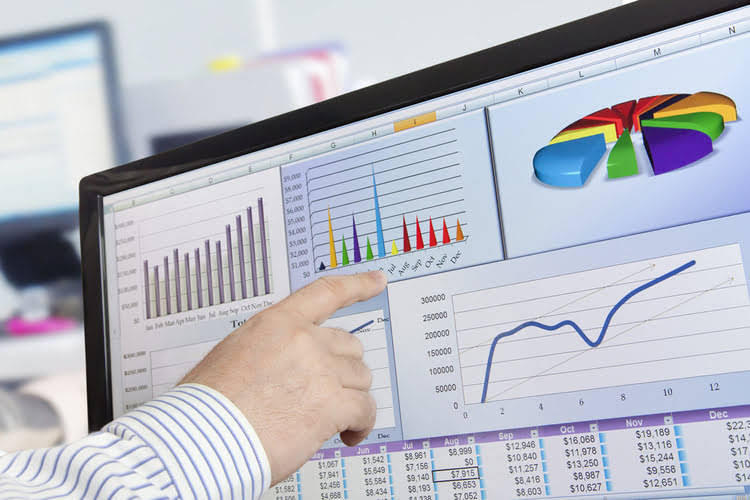
On a pro forma income statement, revenue is calculated based on events that could increase or decrease sales. When creating your pro forma income statement, it’s important to use realistic assumptions to estimate your revenue projections. One of the most important uses of pro forma reports is related to decision-making and strategic planning efforts. For example, you might create pro forma financial statements to reflect the outcomes of three investment scenarios for your business. Doing so can allow you to conduct a side-by-side comparison of possible outcomes to determine which is favorable and guide your planning process.
- In that case, you can use a financing pro forma projection to make your case.
- You can enter in your operating expense projections for your startup in the table below.
- By approaching the process with diligence, realism, and a touch of optimism, she was able to make informed decisions that aligned with her vision for Bea’s Boutique.
- Pro forma is actually a Latin term meaning “for form” (or today we might say “for the sake of form, as a matter of form”).
- Public companies that prefer to use a condensed combined balance sheet can use this template to create their own condensed balance sheet.
Pro Forma Balance Sheet
Finally, with the pro forma income statement and balance sheet complete, we can now knock out the cash flow statement. We’re going to take you through the steps necessary to create a basic full-year pro forma projection using an income statement, cash flow statement, and balance sheet. However, we’re lobbing another caveat your way – take our walk-throughs proforma example with a grain of salt since they’re only a glimpse into the basic pro forma process. The future is inherently uncertain, and pro forma statements are based on assumptions about future events and conditions. Unexpected changes in the business environment, market conditions, or regulatory landscape can render pro forma projections inaccurate.
Pro Forma Cash Flow Statement
- If you need an industry-specific Pro Forma template, check out ProjectionHub’s premium options.
- While both are essential tools for assessing a company’s financial health, they have significant differences in their preparation, content, and application.
- Learn what outsourced accounting involves, its advantages, and whether or not it’s right for you.
- The pro forma part of the balance sheet is a projection that looks ahead, assuming certain things will occur.
- These financial reports are based on hypothetical scenarios, enabling business owners and managers to evaluate potential situations that could occur in the future.
Litigation is another area of difference between GAAP and pro forma financials. They’re a way for you to test out situations you think may happen in the future to help you make business decisions. A pro forma income statement starts like an ordinary income statement based on actual financials. But let’s say it’s important to see the impact of a 30% rise in costs (like energy price, rent, or property price). A pro forma means it’s possible to run this hypothetical scenario by inflating all of the items in the expense columns by 30%. Despite their limitations, pro forma financial statements have a place in financial planning and forecasting.
Example of Startup Cost Forecast
You can do this by referencing your order backlog for several future months, which are translated into cash receipts. Keep in mind, it is illegal to use pro forma financials to mislead investors. Most pro forma invoices provide the buyer with a product description, selling price, and an estimate of any commissions or fees. Although the pro forma invoice may be subject to change, it provides all transaction details so that no charges come as a surprise once the transaction is final. Businesses in virtually all industries use pro forma invoices to satisfy their internal purchase approval process. Pro forma invoices streamline the sales process by limiting additional back-and-forth after a transaction is intiated, as all terms have been defined upfront.

How do pro forma financials assist in cash flow forecasting and management?
But isolating our assumptions as the only variables that drive our financial projections, allows us to focus the conversation on just a few key areas. For example, if your cash flow statement predicts a https://www.bookstime.com/ cash surplus, you might decide it’s the perfect time to invest in that new piece of equipment. Conversely, a forecasted tight spot might suggest delaying expansion plans in favor of shoring up reserves.
- A pro forma invoice is simply a description of an impending transaction, based on an order placed by the buyer.
- This enables them to better understand the combined entity’s future financial performance and potential synergetic effects.
- It is typically used in international trade to provide an estimated cost for goods or services before they are delivered.
- Pro forma financial statements can be prepared separately or in a set like general-purpose financials.
- For these purposes, pro forma statements are typically created as a part of a financial forecast in financial accounting.
- A firm may use a pro forma invoice if the terms of the sales contract specify that full payment is not due until the buyer receives certain goods.
You can use a pro forma income statement to review the projected operational business costs against the current fiscal budget. You can use this benchmark data to figure out whether or not you will expect high expenses in the first quarter as opposed to the second quarter of the year. Contrary to misguided perception, pro forma financial statements are not reserved for big corporations. In fact, small startups can use pro forma financial statements to understand their current financial value and make calculated future predictions. With Accracy, you get a crystal clear image of your financial history so you can focus on planning your future.

Why Forecasting Matters (Even if We’re Guessing)
You can also use the benchmark data of the pro forma income statement to find out whether or not you will have above-average sales growth in a given year. Similarly, you can use the data to review and decide whether or not you should spend more on your marketing campaigns in the fall months. Pro forma statements don’t need to meet the strictest accounting standards, but must be clearly marked as “pro forma” and can’t be used for things like filing taxes. Using pro forma statements that aren’t marked as such to misrepresent your business to investors, the IRS, or financial institutions can be penalized by the Securities and Exchange Commission). Bea’s journey through pro forma analysis not only illuminated the path for her boutique’s expansion but also provided a blueprint for managing future growth. By approaching the process with diligence, realism, and a touch of optimism, she was able to make informed decisions that aligned with her vision for Bea’s Boutique.
Analyzing Your Pro Forma Financial Statements
A pro forma income statement uses the pro forma calculation method, mainly to draw the attention of potential investors to specific numbers when a company issues its quarterly earnings announcement. While pro forma financials are useful for management to evaluate the consequences of various alternatives, they can sometimes present more optimistic pictures of future results. GAAP requirements are often omitted from pro forma statements because they result in more negative reporting. The statement of cash flow indicates the amount of money that goes in and out of a business. A pro forma statement of cash flow can be helpful in determining when there might be a shortage of cash, which could help determine whether cutting expenditures or taking on a loan could help. This type of pro forma projection looks at the past financial statements of your business, plus the past financial statements of a business you want to buy.

Pro forma financial statements play a crucial role in business planning and decision-making processes. These financial reports are based on hypothetical scenarios, enabling business owners and managers to evaluate potential situations that could occur in the future. By utilizing pro forma statements, companies can project the financial impact of various business decisions, such as launching new product lines, expanding to new locations, or restructuring a department. Pro forma earnings per share (EPS) are calculated by dividing a firm’s net income (and any adjustments) by its weighted shares outstanding, plus any new shares issued due to an acquisition. This metric determines the financial outcomes of any acquisition or merger and tells the parent company whether the transaction will be accretive (good) or dilutive (bad) to the financial state of the company.
Creating a pro forma cash flow statement
Management will start with the standard income statement and add the estimated $5M sales projection along with the corresponding expenses needed to produce and ship these goods to the distributor. If the future deal with Wal-Mart goes through, the company is prepared for it and investors and creditors have an idea about the risks and rewards involved in the future. Here’s a historical example of a pro forma income statement, courtesy of Tesla Inc.’s (TSLA) unaudited pro forma condensed and consolidated income statement for the year ended Dec. 31, 2016.



